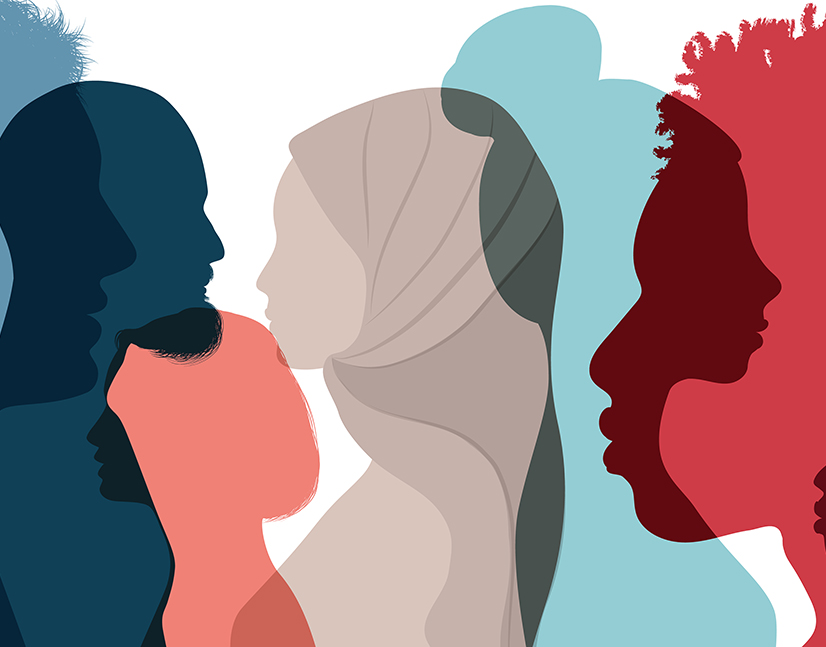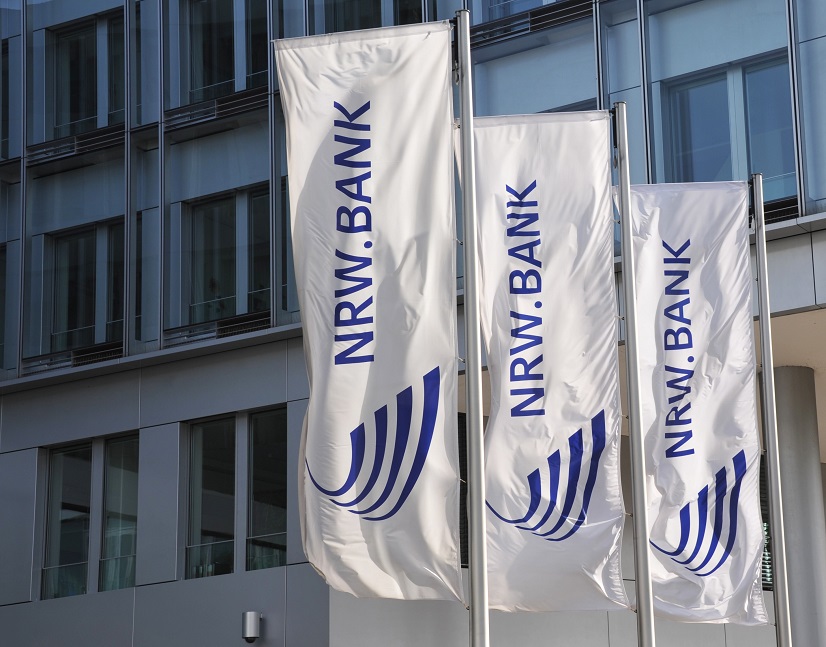
NRW.BANK’s social ambitions come to fruition
Developing a product that would work in the Australian dollar market was a stated goal of NRW.BANK when it put together its social-bond programme. In the wake of the issuer’s Kangaroo social-bond debut, its Düsseldorf-based head of investor relations, Frank Richter, discusses delivery of a new programme under pandemic conditions, Australian domestic investor engagement and Kangaroo pricing.
NRW.BANK priced A$350 million (US$267.3 million) of five-year social bonds on 24 March – the transaction also being the issuer’s second off its social programme. The deal was upsized from A$250 million at launch and priced in line with guidance at 34 basis points over semi-quarterly swap.
NRW.BANK flagged following its last Kangaroo benchmark transaction, in May last year, that it would like to return to the Australian market for a social-bond deal. What were the steps between then and the recent pricing – at issuer level and specifically in engagement with the Australian dollar investor base around NRW.BANK social bonds?
The next step was to prepare our inaugural transaction. We focused first on the euro market in the social-bond format – which shouldn’t be a surprise. Our debut transaction, at 15 years for €1 billion (US$1.2 billion) was a great success. The order book closed north of €3 billion. Based on this experience it was obvious that we were on the right path!
It is also obvious that – next to the euro market – the Kangaroo market is globally the most relevant one for us. Given our strategic commitment, we decided to issue our next Kangaroo bond under NRW.BANK’s social-bond framework.
It would not have been possible to roadshow or otherwise meet Australian domestic investors in the past year – and presumably this also applies to most or all Australian dollar investors in Asia. How did NRW.BANK go about introducing its social-bond programme to the Kangaroo market under these circumstances?
We focus on keeping our global investor base up to date. In the pandemic period we have made use of journals. For instance, we made our broader approach toward ESG transparent using Environmental Finance magazine and KangaNews helps us a lot when it comes to staying in touch with our investor base in Australia.
Coming closer to the transaction, we held a global investor call. Approximately a dozen investors took the opportunity to get familiarised with NRW.BANK’s concept. While they are appreciated, experience shows that digital meetings are less lively and interactive. However, in this case the Q&A after our formal presentation was used intensively.
For instance, we had a debate about the threshold of €75,000 taxable annual income for a couple being qualified for our affordable home-ownership program. It seemed high to some investors. Our response is that NRW.BANK is operating in core Europe and Germany is a G7 economy. Income is high by international comparisons but so are taxes – so the corresponding annual disposable income is less than €50,000. Home ownership is often out of reach at this level.
How much green, social and sustainability issuance has NRW.BANK completed to date? What sort of capacity does it have to issue more and what proportion of could come in this format?
We did our inaugural green transaction 2013. Since then we have issued green bonds regularly and we placed our 10th transaction in January. Eight are still outstanding with total volume of €4 billion.
We entered the social-bond market in 2020 with the debut issue I mentioned earlier. The social Kangaroo is our second social bond and our first thematic bond not denominated in euros.
Thematic bonds are getting more and more relevant for our funding programme. Up to 2018, approximately 5 per cent of our annual funding was achieved with green bonds. This ratio has increased to 12 per cent and it will grow further. It always depends on markets, of course, but my expectation is that the thematic bond ratio will come close to 20 per cent of our total funding in 2021.
There was a lot of talk last year about SSA issuers in particular incorporating specific COVID-19 relief projects in their eligible social asset pools. On the other hand, a number of Australian issuers have told us they prefer assets with non-finite duration in their pools. What is NRW.BANK’s take?
Of course our lending activity was and is affected by COVID-19 and this has an influence on our social-bond asset pool. But this influence is an implicit one. Examples are loans granted to economically disadvantaged municipalities, that make rising deficits affordable, and supporting school boards in their digitalisation efforts to make home schooling real.
More generally, we align our social-bond framework to ICMAs SBPs. The starting point for asset selection is always the targeted population and I think we have a good mixture of social issues in our pool.
Young, middle class families are a focus, in particular assisting them with interest-rate-subsidised loans and long tenors in order to acquire their first home or flat. Property prices are soaring and it is very difficult to find affordable homes in the fast growing regions.
In order to stimulate labour demand, we also support SMEs. We want to help safeguard or to create jobs.
To improve human capital and to brighten the employment perspectives of our youth, our lending programme includes supporting school boards’ efforts to upgrade school buildings. The topics in this area are digitalisation, accessibility, inclusion and energy efficiency.
We also focus on ensuring equivalent living condition through our region, in which context supporting cohesion is necessary to keep people and society together. These topics are highly relevant in economically disadvantaged municipalities. These areas face longer-term disequilibrium if their GDP per capita is in the first quartile in combination with above average unemployment.
“It was a volatile capital market environment and I believe a conventional Kangaroo wouldn’t have shown the same primary-market strength. Most likely the pricing would have been a little bit north while size and quality of the book would have been weaker.”
This year has so far not been generally favourable for SSA Kangaroo economics, although the market has seen more prints lately including from offshore credit issuers. NRW.BANK has also in the past been willing to meet the market on pricing to secure investor diversification. How did pricing stack up on this deal on a landed cost of funds basis?
When we started our social project, market conditions looked favourable from a euro issuer perspective. But markets can move fast and suddenly we found ourselves in rough conditions. Volatility was high and spreads widened but we tried to navigate through – and our compliments to our banks for helping us do so. We always felt very comfortable with their advice.
The key was that the entire group remained patient, always having in mind our overall target: a well-placed bond rather than a quick transaction.
We eventually managed a successful launch even if it was – from our point of view – marginally more expensive than originally expected. We accept market forces and enjoyed a really nice, diversified orderbook with approximately 25 investors showing their interest in A$350 million transaction. We added a reliable new point to our curve and we were the first Australian dollar social-bond issuer from Germany.
Does a social bond give incrementally better Australian dollar pricing than a vanilla NRW.BANK bond would have achieved?
We have learned from other markets that themed bonds are more robust than conventional bonds and they show a ‘greenium’ or at least a smaller new-issuance premium.
Green is even more robust than social. However, the social-bond segment is younger and its depth is less developed – for the time being. I see many parallels to the infant green-bond market and I forecast a bright future for social bonds.
NRW.BANK said last year that the social-bond product would be “designed with Australian domestic demand in mind”. How successful was this deal at attracting domestic accounts to the book?
This transaction was somewhat smaller than NRW.BANK’s last Kangaroo benchmark, at A$350 million compared with A$625 million, but it was upsized. What are the issuer’s views on volume achieved?
The size is smaller than our last transaction. But markets are different, and price and volume are a function of this. Our philosophy is to issue only if we meet demand.

WOMEN IN CAPITAL MARKETS Yearbook 2023
KangaNews's annual yearbook amplifying female voices in the Australian capital market.

SSA Yearbook 2023
The annual guide to the world's most significant supranational, sovereign and agency sector issuers.










